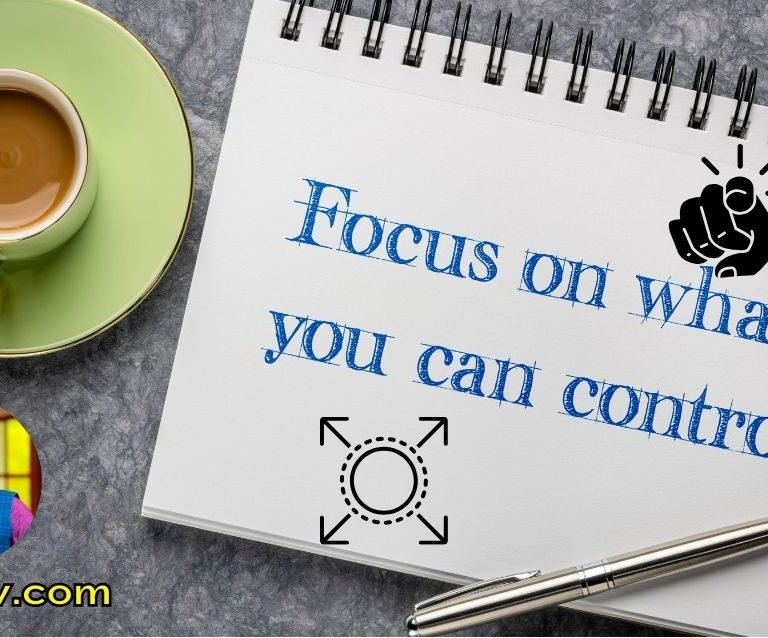The Power of Action Over Words
The journey of transforming ideas into reality often begins with a pivotal decision: choosing action over mere words. The human tendency to procrastinate or become ensnared in interminable discussions is a hurdle many encounter. Often, the energy expended in planning, debating, and theorizing far outweighs the effort needed to take the first tangible step. This inertia can create a significant roadblock, halting progress before it even begins.
The renowned quote by Walt Disney, “The best way to get started is to quit talking and begin doing,” encapsulates a fundamental truth about productivity and achievement. It underscores the necessity of transitioning from ideation to implementation. In the vibrant world of ideas, it’s easy to become captivated by the allure of potential. Discussions and brainstorming sessions are undeniably important, but without actionable steps, they remain just that – potential.
The essence of this blog post revolves around instilling the importance of action. We will delve into the psychological and practical reasons why adopting a proactive approach can pave the way for success. Engaging in the act itself, rather than being perpetually ensnared by preparatory steps, can bridge the gap between aspiration and accomplishment. Here, it’s essential to recognize that initial imperfections are a natural part of the process, and the momentum gained from starting can be invaluable.
As we explore this theme, we’ll provide insights on overcoming the barriers to action and practical tips to foster a habit of doing rather than merely talking. By embracing this principle, individuals can unlock their potential, bringing their ambitions to life through decisive and meaningful movement.
The Psychology Behind Procrastination
Procrastination is a prevalent issue that impedes productivity and progress. Understanding the psychological underpinnings of procrastination can offer valuable insights into why individuals delay taking action. One prominent factor is the fear of failure. People often procrastinate to avoid potential embarrassment or negative outcomes, a phenomenon extensively analyzed by psychologists. According to a study by the American Psychological Association, individuals with a high fear of failure are significantly more prone to procrastinating tasks, as they prefer temporary relief over potential disappointment.
Perfectionism is another critical aspect. Perfectionists set exceedingly high standards for their work, leading to continuous delays in starting or completing tasks. Research published in the Journal of Counseling Psychology demonstrates that perfectionists often procrastinate due to the anxiety of not meeting their own rigorous expectations. This fear of producing anything less than perfect prevents them from even initiating the task at hand.
What also contributes to procrastination is analysis paralysis. This occurs when individuals overthink and overanalyze options, resulting in a state of inaction. Barry Schwartz, a renowned psychologist, elaborates on this concept in his book “The Paradox of Choice,” where he discusses how an abundance of choices leads to decision-making paralysis. Overwhelmed by possible outcomes and information, people find it challenging to take the first step.
Furthermore, a lack of clear goals can stifle motivation and action. Without a well-defined target, it’s easy to procrastinate because there’s no clear direction or endpoint. A study by psychologist Gail Matthews found that those who wrote down their goals and specific plans to achieve them were 42% more likely to accomplish these goals. This underscores the importance of having a clear, actionable roadmap to combat procrastination effectively.
By understanding these psychological drivers—fear of failure, perfectionism, analysis paralysis, and lack of clear goals—individuals can develop strategies to overcome procrastination. Being aware of these factors can help one take that crucial first step towards actionable progress.
The Benefits of Taking Immediate Action
Taking immediate action holds unparalleled benefits. Momentum is one of the most significant advantages that arise from starting right away. Once you move past the initial inertia, each step forward builds upon the previous one, creating a powerful force that propels you towards your goals. This continuous progress can be observed in successful entrepreneurs like Elon Musk, who dives straight into new ventures, leveraging their initial momentum to build substantial enterprises.
Moreover, learning through experience is an invaluable benefit of taking action promptly. As you engage directly with tasks and challenges, you expose yourself to practical insights that theoretical knowledge alone can’t provide. Thomas Edison’s relentless experimentation to invent the light bulb is a prime example; each trial, even when they seemed like failures, offered lessons that advanced his understanding and ultimately led to groundbreaking success.
Boosting confidence is another crucial advantage. Taking that first step, no matter how small, can significantly enhance self-assurance. Completing tangible tasks generates a sense of achievement, proving to yourself that you are capable. This growing confidence further fuels motivation, creating a self-sustaining cycle of continuous progress. Serena Williams’ approach to her tennis career showcases this principle. By consistently pushing herself to compete, she fortified her confidence, leading to an illustrious career filled with victories.
Additionally, immediate action brings you closer to your goals incrementally. Each effort, regardless of its size, is a step toward realizing your aspirations. This proximity can be highly motivating, making the path to success feel more attainable. Steve Jobs’ journey with Apple exemplifies this; by persistently pursuing his vision through small, decisive actions, he revolutionized the tech industry and changed how we interact with technology.
In essence, ceasing to talk and beginning to act can set in motion a cycle of momentum, learning, confidence, and proximity to your goals. The experiences of pioneers across various fields strongly support this notion, illustrating how immediate action fosters success and growth in a myriad of ways.
Steps to Overcome the Habit of Talking and Start Doing
Transitioning from talking about plans to actually executing them can often seem daunting, but adopting a structured approach can simplify this transformation. Begin by breaking down larger tasks into smaller, manageable steps. This helps to reduce the overwhelming nature of complex goals and makes it easier to focus on immediate actions. For instance, if starting a new project feels intimidating, divide it into smaller activities such as conducting research, setting milestones, and allocating resources. Each of these steps should be specific and actionable, paving a clear path toward completion.
Setting clear and achievable goals is another critical component in overcoming the habit of procrastination. Goals should be SMART—Specific, Measurable, Achievable, Relevant, and Time-bound. By defining what exactly you intend to accomplish, along with realistic timelines, you can enhance focus and motivation. For example, instead of having a vague ambition of “getting fit,” a SMART goal would be “to lose 10 pounds in 3 months by exercising thrice a week and monitoring daily caloric intake.” Such precision ensures clarity and provides measurable checkpoints for tracking progress.
Creating a timeline can provide structure and ensure consistent progress. Establishing a timeline involves setting deadlines for each step and adhering to them. Use tools like calendars, planners, or digital project management apps to map out the activities. This visual representation of deadlines can create a sense of urgency and help keep procrastination at bay. Regularly revisiting and adjusting your timeline maintains its relevance and effectiveness, reflecting any changes or unexpected challenges along the journey.
Lastly, holding yourself accountable is essential for continuous progress. Sharing your goals with a friend, mentor, or a support group can provide external motivation and encouragement. Regular check-ins with these accountability partners can foster a supportive environment where successes are celebrated and setbacks are analyzed constructively. Additionally, self-accountability can be strengthened through regular self-assessment and rewarding yourself upon accomplishing milestones.
By integrating these practical steps, you can shift from merely talking about your ambitions to actively working towards them. Embrace these strategies to equip yourself for effective action, and watch as your productivity and satisfaction significantly improve.
The Role of Planning in Taking Action
Effective action-taking begins with meticulous planning, forming the bedrock for achieving set goals. Proper planning provides a roadmap, outlining the steps necessary to move from an idea to realization. Without a structured approach, actions can become haphazard, leading to inefficiencies and potential failure.
Balanced planning is pivotal. Deliberation and strategy should guide every endeavor, yet excessive planning can paradoxically result in inertia. Over-planning, often fueled by the pursuit of perfection, hampers progress and stymies momentum. Striking an equilibrium between thoughtful preparation and decisive action is essential.
Utilizing tools and techniques can streamline the planning process. SMART goals, which stand for Specific, Measurable, Achievable, Relevant, and Time-bound, provide a framework to formulate clear and attainable objectives. This method not only clarifies intentions but also sets parameters for tracking progress.
Project management applications, such as Trello or Asana, offer platforms for organizing tasks, timelines, and team collaborations. These digital tools foster accountability and ensure that every action step is visible, thus reducing the likelihood of tasks falling through the cracks. Additionally, they present opportunities for adaptive planning, allowing adjustments in response to unforeseen developments.
Daily to-do lists are another effective planning tool, breaking down larger goals into manageable daily tasks. These lists help maintain focus, prioritize crucial activities, and provide a sense of accomplishment as items are checked off. The simplicity of a to-do list belies its utility in fostering a proactive and organized approach to achieving objectives.
In summary, while planning establishes the foundation for effective action, it must be balanced. Employing goal-setting methods, leveraging project management apps, and consistently using to-do lists can optimize planning processes, ensuring they propel action rather than hinder it.
Learning from Failure and Mistakes
Failure and mistakes are intrinsic to any journey, particularly one that involves taking action and moving forward. They should never be viewed as deterrents; rather, they serve as valuable learning opportunities. Acknowledging the inevitability of failure, it is vital to approach mistakes with a constructive mindset. Each setback provides a chance to gain insights, refine strategies, and ultimately enhance one’s skills and understanding.
Renowned personalities often exemplify the transformative power of viewing failures positively. Take, for instance, Thomas Edison, who encountered thousands of unsuccessful attempts before inventing the electric light bulb. His perspective on failure was enlightening — he regarded each unsuccessful try not as a failure but as a step closer to success. Similarly, Oprah Winfrey faced numerous setbacks early in her career, including being dismissed from her first television job. However, these experiences didn’t hinder her; instead, they fueled her determination, leading her to become a media mogul and influential figure across the globe.
To effectively deal with and overcome setbacks, it is beneficial to adopt specific strategies. Firstly, cultivating resilience is essential. This can be achieved through maintaining a growth mindset, where one views challenges and failures as opportunities for development rather than insurmountable obstacles. Additionally, breaking down large goals into manageable tasks can mitigate the chances of feeling overwhelmed and provide a clear path forward. Reflection is another crucial aspect. After encountering a failure, individuals should take the time to analyze what went wrong and why, thereby facilitating informed decision-making in future endeavors.
Networking and seeking support from others who have faced similar challenges can also be advantageous. Sharing experiences and receiving encouragement can foster a supportive environment that bolsters one’s resolve to persevere. Furthermore, it is important to remember that setbacks are a natural part of any pursuit. Embracing them with an open and optimistic attitude can significantly impact one’s ability to navigate through adversity and emerge stronger and more prepared for future successes.
The Importance of Consistency and Persistence
Consistency and persistence are pivotal in transforming actions into long-term success. The initial enthusiasm that accompanies any new endeavor often dwindles over time, making it crucial to cultivate habits and routines that sustain momentum. Establishing a daily practice can significantly contribute to maintaining consistency. For instance, allocating specific time slots each day for particular tasks can embed these activities into your routine, making them harder to neglect.
Habit formation plays a central role in maintaining consistency. Adopting the philosophy that small, repeated actions lead to substantial outcomes helps keep the bigger picture in focus. For example, a writer who dedicates thirty minutes daily to writing consistently accumulates significant progress over time. The same principle applies across various fields—from fitness to professional development.
Persistence complements consistency by reinforcing the importance of continuing efforts even when motivation wanes. The journey to success is rarely linear; it often involves overcoming obstacles and failures. Persistent individuals develop resilience and adaptability, key traits that facilitate long-term achievement. This resilience can be nurtured through setting realistic goals, regularly monitoring progress, and celebrating small victories. These practices instill a sense of accomplishment, further fueling perseverance.
Motivation can be sustained over the long run through a mix of intrinsic and extrinsic factors. Intrinsic motivation, driven by personal satisfaction and growth, often leads to enduring engagement with activities. On the other hand, extrinsic motivators, such as rewards or recognition, can provide additional encouragement. Creating a balanced mix of both can keep the drive alive.
Incorporating accountability mechanisms, such as sharing goals with a mentor or joining a supportive community, can enhance both consistency and persistence. These frameworks create an environment where progress is monitored, and motivation is maintained through external support.
Ultimately, the convergence of consistency and persistence lays the groundwork for achieving sustained success. By embedding effective habits, nurturing resilience, and leveraging motivational strategies, individuals can transform fleeting actions into long-term accomplishments.“`html
The Doer’s Mindset
The essence of achieving success fundamentally lies in the transition from intention to action. Throughout this blog post, we have explored the importance of moving beyond talk and taking definitive steps toward our goals. Discussing plans and dreaming big is valuable, but these alone are insufficient without actionable steps that transform ideas into reality.
The conceptual framework of a ‘doer’s mindset’ is built on proactive behavior, perseverance, and resilience. This mindset encourages us to tackle challenges head-on, learn from failures, and continually adapt our strategies. Successful individuals and organizations share this ability to move decisively and consistently toward their objectives, learning and growing with every step taken.
Overcoming the initial inertia and starting the journey is often the most challenging aspect. As we have emphasized, breaking tasks into manageable steps and setting achievable goals can facilitate this process. Adopting a doer’s mindset means prioritizing actions that yield tangible progress and consistently pushing boundaries.
As you stand on the cusp of your endeavors, remember that the journey of a thousand miles begins with a single step. Start small if you must, but start nonetheless. Each action builds momentum and confidence, propelling you closer to your aspirations. Document your progress, celebrate your milestones, and continually refine your approach.
We encourage you to take the plunge today. Identify the first step in your journey and commit to executing it. Whether it’s drafting an outline for a new project, reaching out to a mentor, or simply implementing a new habit, the key is to act now. Success is not a matter of chance; it is a matter of choice, driven by a purposeful transition from talking to doing.









